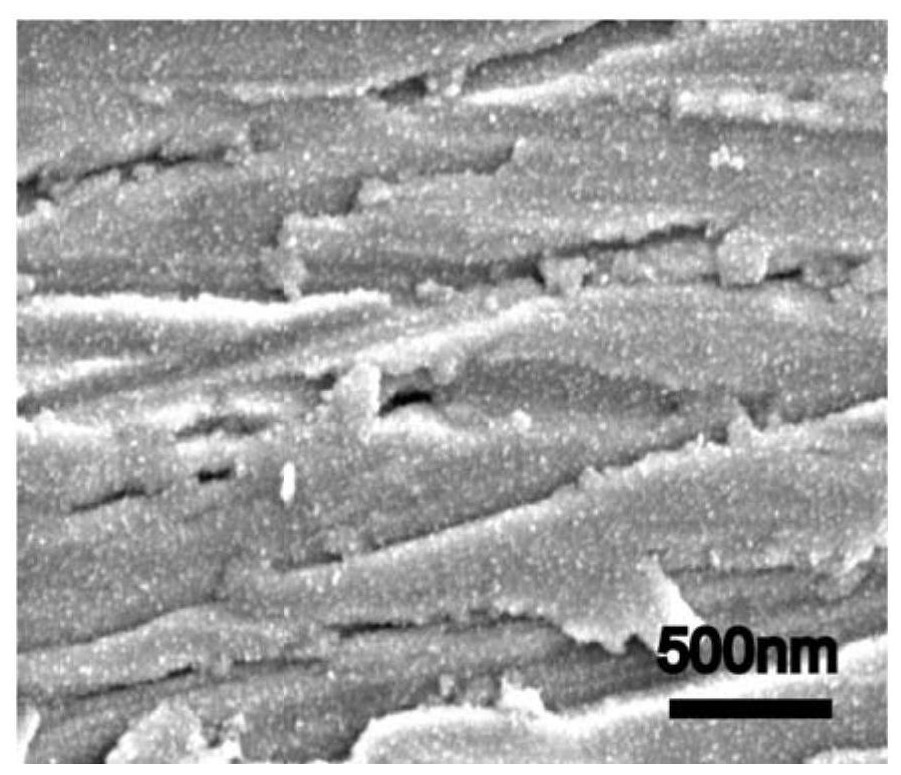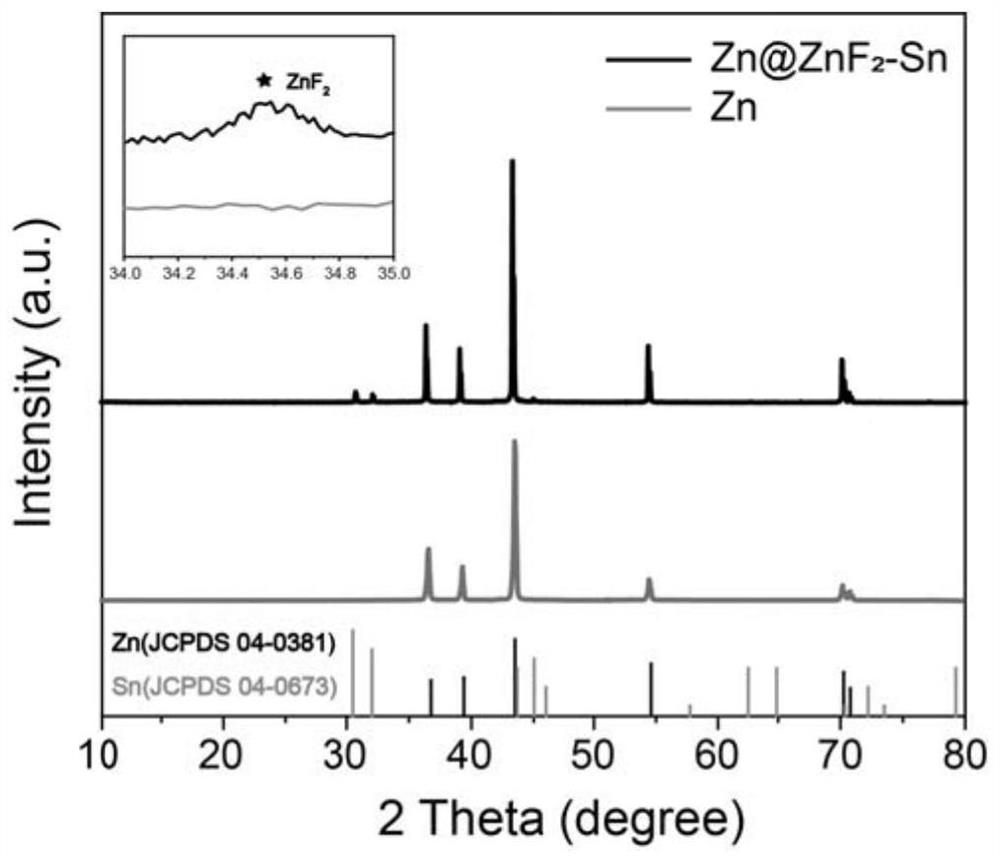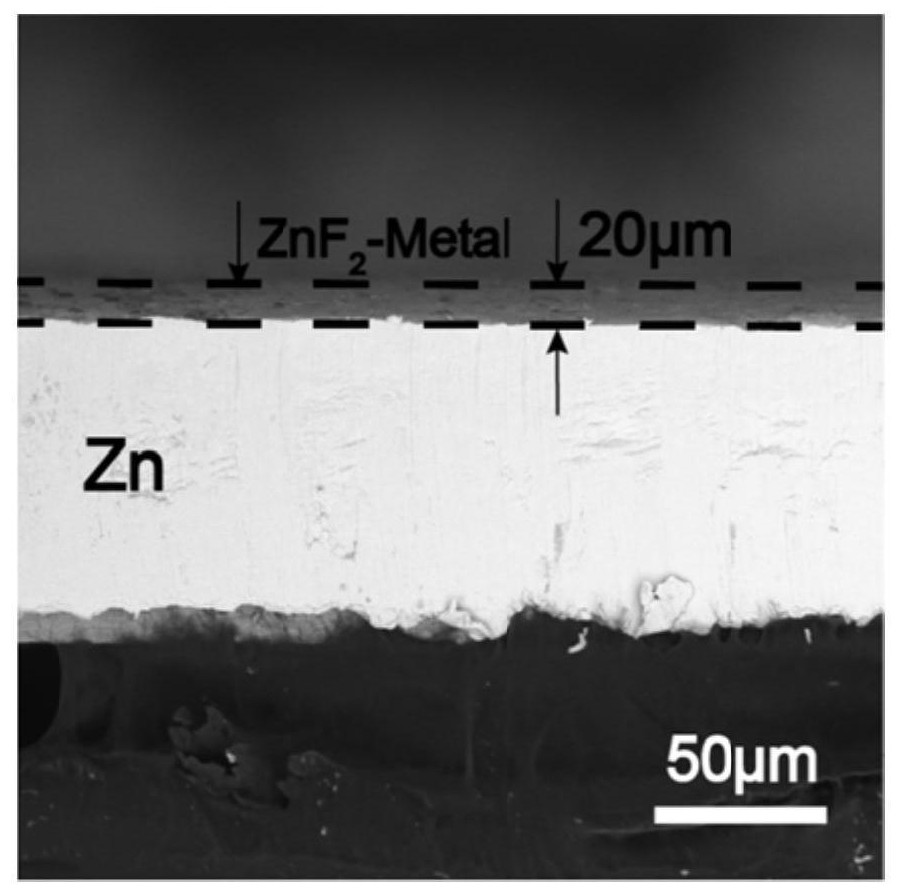Double-phase interface protected metal zinc negative electrode and preparation method and application thereof
A phase interface and metal zinc technology, applied in active material electrodes, final product manufacturing, sustainable manufacturing/processing, etc., can solve the problems of reducing battery reversible capacity and Coulombic efficiency, short circuit of positive and negative materials, and potential safety hazards. Achieve the effects of improving long-cycle performance, reducing consumption, and avoiding the coating process
- Summary
- Abstract
- Description
- Claims
- Application Information
AI Technical Summary
Problems solved by technology
Method used
Image
Examples
preparation example Construction
[0045]The invention provides a method for preparing a metal zinc negative electrode protected by a dual-phase interface. The method of treating the zinc negative electrode with a metal fluoride solution directly generates an artificial dual-phase interface on the surface of the zinc negative electrode, which is used as a negative electrode material for an aqueous zinc ion battery; The interface is made of ZnF 2 It is composed of elemental metal, and the specific steps are as follows:
[0046] S1, configure metal fluoride solution;
[0047] Dissolving metal fluoride in an organic solvent to obtain metal fluoride solutions of different concentrations;
[0048] Metal Fluoride as MF x is SnF 2 , FeF 3 , SbF 3 or PbF 2 , different metal fluorides have similar trends, and the thickness of the protective layer increases correspondingly with the increase of metal fluoride solution concentration.
[0049] The organic solvent is isopropanol, dimethyl sulfoxide, diethyl ether or m...
Embodiment 1
[0061] (1) 15mmol SnF 2 Add and dissolve in 5mL dimethyl sulfoxide to obtain SnF with a concentration of 30mM 2 solution;
[0062] (2) Place the polished and cleaned zinc flakes in the above solution, and let stand for 30min at 60°C;
[0063] (3) The treated zinc flakes are cleaned with ethanol and then dried under vacuum for 10 h to obtain a zinc anode with dual-phase interface protection.
[0064] figure 1 The SEM image of the surface of the zinc negative electrode protected by the dual-phase interface obtained in this example shows that the surface of the zinc negative electrode after treatment presents a sheet-like stacking structure. It is speculated that this structure can prevent the zinc negative electrode from directly contacting the electrolyte and causing zinc Side reactions such as chip corrosion and hydrogen evolution.
[0065] figure 2 The XRD pattern of the zinc negative electrode surface protected by the dual-phase interface obtained in this example is sh...
Embodiment 2
[0072] (1) 10mmol SnF 2 Add and dissolve in 5 mL of ether to obtain SnF with a concentration of 20 mM 2 solution;
[0073] (2) Place the polished and cleaned zinc flakes in the above solution, and let stand for 20min at 40°C;
[0074] (3) The treated zinc flakes were cleaned with isopropanol and then dried under vacuum for 8 h to obtain a zinc anode with dual-phase interface protection.
[0075] The zinc anode obtained in this example was characterized by XRD, SEM, etc., and the existence of the dual-phase interface was confirmed, and it was assembled into a symmetrical battery at 1 mA cm -2 stable cycling for more than 580 h at high current density, assembled into Zn||V 2 O 5 Full battery at 1A g -1 It was cycled for 360 cycles at the same current density, and the cycle stability was 43%.
PUM
 Login to View More
Login to View More Abstract
Description
Claims
Application Information
 Login to View More
Login to View More - R&D
- Intellectual Property
- Life Sciences
- Materials
- Tech Scout
- Unparalleled Data Quality
- Higher Quality Content
- 60% Fewer Hallucinations
Browse by: Latest US Patents, China's latest patents, Technical Efficacy Thesaurus, Application Domain, Technology Topic, Popular Technical Reports.
© 2025 PatSnap. All rights reserved.Legal|Privacy policy|Modern Slavery Act Transparency Statement|Sitemap|About US| Contact US: help@patsnap.com



